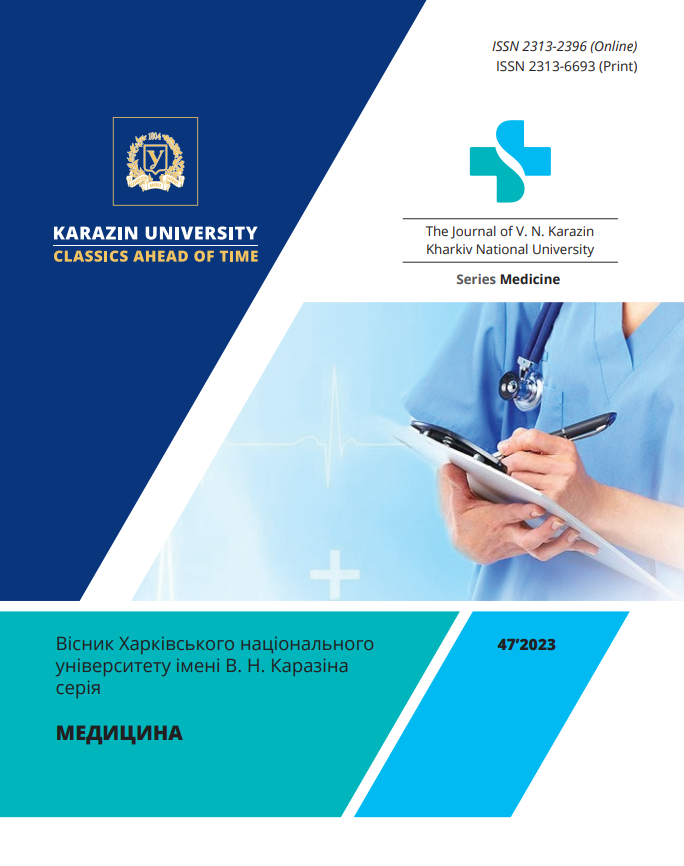Role of hysteroscopy in the diagnostics of endometrium pathology and in the application of auxiliary reproductive technologies
Abstract
Abstract. The introduction of endoscopic technologies made it possible to significantly expand diagnostic possibilities and clarify the nature of intrauterine pathology when using assisted reproductive technologies. Hysteroscopy allows you to take material for examination from the uterine cavity, and also ensures the carrying out of this procedure for diagnostic purposes as much as possible. Treatment of infertility by hysteroscopy plays a very important role in restoring a woman's reproductive function. The aim of the study was to improve the diagnosis of endometrial pathology through the use of hysteroscopy and targeted biopsy in the restoration of fertility and the use of assisted reproductive technologies. Materials. A clinical and statistical analysis of the results of 88 operative hysteroscopies in patients with infertility, which were divided into two groups, was carried out. The first group included 80 patients (90.91 %) with genital and extragenital pathology. The second group included 8 patients (9.01 %) who did not have concomitant gynecological and extragenital pathology. Hysteroscopy was performed with the equipment and tools of the «KARL STORZ» company. Monopolar and bipolar coagulation was used for hemostasis. Taking into account that pathology of the uterine cavity and endometrial are frequent causes of impaired reproductive function, it was proposed to use hysteroscopy to restore reproductive function. The results. The condition of the mucous membrane of the uterus with the help of hysteroscopy was studied in all clinical observations, since this method of instrumental research allows primarily to examine and evaluate the structural features of the endocervix and endometrial. In observation groups I and II, hysteroscopy was performed in all 88 patients: group 1 in 80 patients (90.91%) with pathological changes of the uterine mucosa and group 2 – in 8 patients (9.01 %) without pathology of the uterine mucosa. At the same time, 4 (3.52 %) women of 2 groups were diagnosed with extragenital pathology, and gynecological pathology was eliminated. The most common were endometrial polyps, chronic endometritis, cervical canal stenosis, and synechiae in the uterine cavity. Endoscopic technologies have expanded the diagnostic capabilities of investigating intrauterine pathology at the stage of fertility restoration and preparation for in vitro fertilization (IVF) and overcoming the causes of infertility. Conclusions. Hysteroscopy with morphological examination of the endometrial remains the main method of diagnosing intrauterine pathology. The obtained data will help the clinician to make the correct diagnosis in a timely manner and develop optimal and individual patient management tactics.
Downloads
References
Aplin J, Fazleabas A, Glasser S, Giudice L. The Endometrium: Molecular, Cellular and Clinical Perspectives by/ Reproductive Medicine. Assisted Reproductive Techniques. 2008:820–850. DOI: https://doi.org/10.3109/9780203091500
Tatarchuk T, Reheda S. Protyzapalna terapiia yak skladova kompleksu likuvannia retsydyvuiuchoi hiperplazii endometriia. Reproduktyvnoe zdorove zhenshchynы. 2007;3:75–6. [in Ukrainian]
Altybaieva D. Diahnostychni kryterii adenomiozu v poiednanni z hiperplastychnymy protsesamy endometriia u zhinok reproduktyvnoho viku. Zb. nauk. prats Asotsiatsii akusheriv-hinekolohiv Ukrainy. K.: Yuston. 2016;9–12. [in Ukrainian]
Zaporozhan V, Tatarchuk T, Dubynyna V, Kosei N. Sovremennaia dyahnostyka y lechenye hyperplastycheskykh protsessov эndometryia. Reproduktyvnaia эndokrynolohyia. 2012;1(3):5–12. DOI: https://doi.org/10.18370/2309-4117.2012.3.5-12. [in Ukrainian]
Tatarchuk T, Burlaka O, Korinna K. Medykamentozna terapiia hiperproliferatyvnykh protsesiv endometriia. Liky ta zhyttia. 2005;1:100–101. [in Ukrainian]
Bettocchi S. Challenging the cervix: strate- gies to overcome the anatomic impediments to hysteroscopy: analysis of office hysteroscopies. Fertil Steril. 2016;105(5): e16–e17. DOI: https://doi.org/10.1016/
j.fertnstert.2016.01.030
Avramenko N, Postolenko V, Avramenko N, Postolenko V. Mozhlyvosti suchasnykh metodiv diahnostyky u zhinok iz bezpliddiam pry khronichnomu endometryti. Bukovynskyi medychnyi visnyk. 2020;24(1):3–9. DOI: https://doi.org/10.24061/203327 [in Ukrainian]
Khmil S, Chudiiovych N. Khronichnyi endometryt yak odyn iz faktoriv nevdalykh sprob implantatsii embrioniv u prohramakh dopomizhnykh reproduktyvnykh tekhnolohii. Aktualni pytannia pediatrii, akusherstva ta hinekolohii; 2019;2:111-117. DOI: https://doi.org/10.11603/24116-4944.2019.2.10930 [in Ukrainian]
Hwang Ji, Song S. Optimal Dose of Vaginal Misoprostol for Cervical Ripening before Hysteroscopy: A Randomized Double-Blind Study. J Minim Invasive Gynecol. 2018;25(6):1031–1034. DOI: https://doi.org/10.1016/j.jmig.2018.01.022
Salazar C, Isaacson K. Office Operative Hysteroscopy. An Update J Minim Invasive Gynecol. 2018;25(2):199–208. DOI: https://doi.org/10.1016/j.jmig.2017.08.009
Humenetskyi I. Stan porozhnyny matky ta endometriia u zhinok pry nevdalykh sprobakh zastosuvannia dopomizhnykh reproduktyvnykh tekhnolohii. Aktualni problemy pediatrii, akusherstva ta hinekolohii. 2016;1:57–59. DOI: https://doi.org/10.11603/24116-4944.2016.1.5987 [in Ukrainian]
12 Mattar OM. Efficacy and safety of tramadol in pain relief during diagnostic outpatient hysteroscopy: systematic review and meta-analysis of randomized controlled trials. Fertil Steril. 2019;111(3):547–552. DOI: https://doi.org/10.1016/j.fertnstert.2018.10.026
Holota V, Beniuk V, Dyndar O, Makarenko H. Aspekty ultrazvuku v likuvanni endometriozu. III mizhnar.nauk.-prakt. seminar Aktualni problemy endokrynolohii dytiachoho, pidlitkovoho ta reproduktyvnoho viku. Donetsk. 2004;30. [in Ukrainian]
The Journal of V. N. Karazin Kharkiv National University, series Medicine has following copyright terms:
- Authors retain copyright and grant the journal right of first publication with the work simultaneously licensed under a Creative Commons Attribution License that allows others to share the work with an acknowledgement of the work’s authorship and initial publication in this journal.
- Authors are able to enter into separate, additional contractual arrangements for the non-exclusive distribution of the journal’s published version of the work, with an acknowledgement of its initial publication in this journal.
- Authors are permitted and encouraged to post their work online prior to and during the submission process, as it can lead to productive exchanges, as well as earlier and greater citation of published work.




